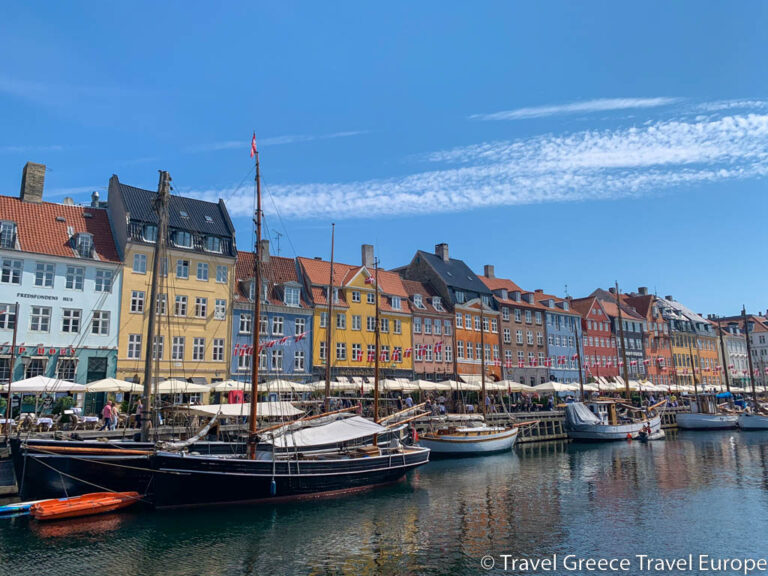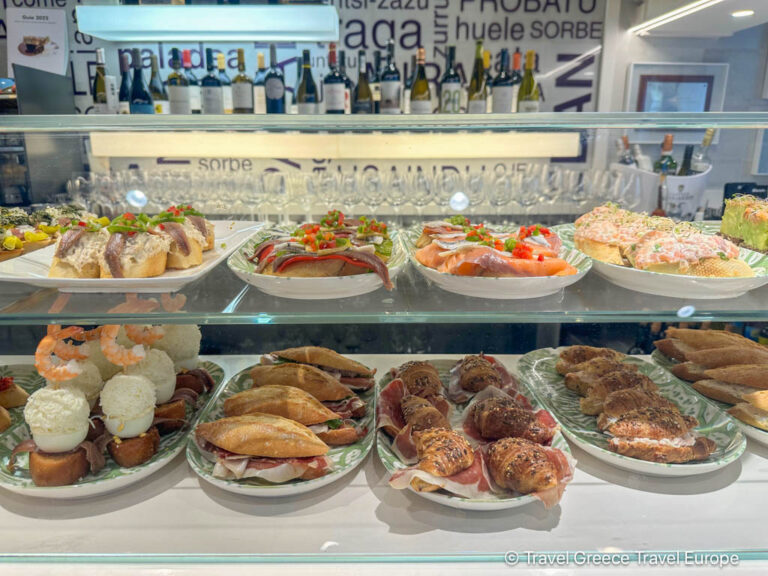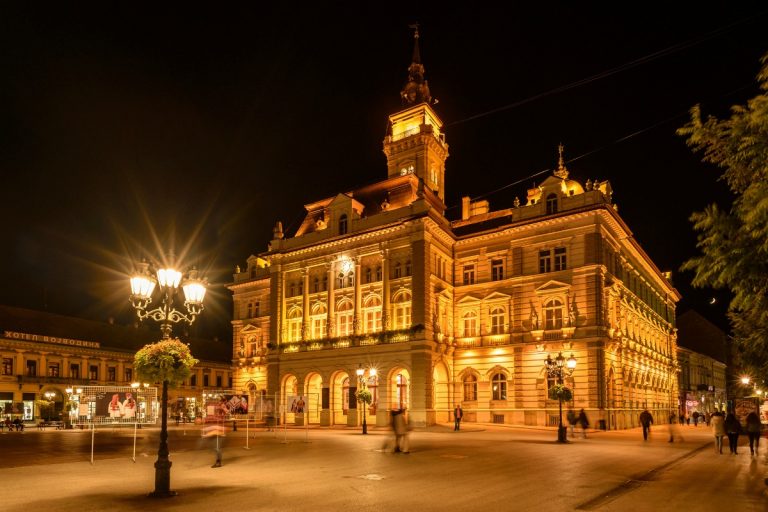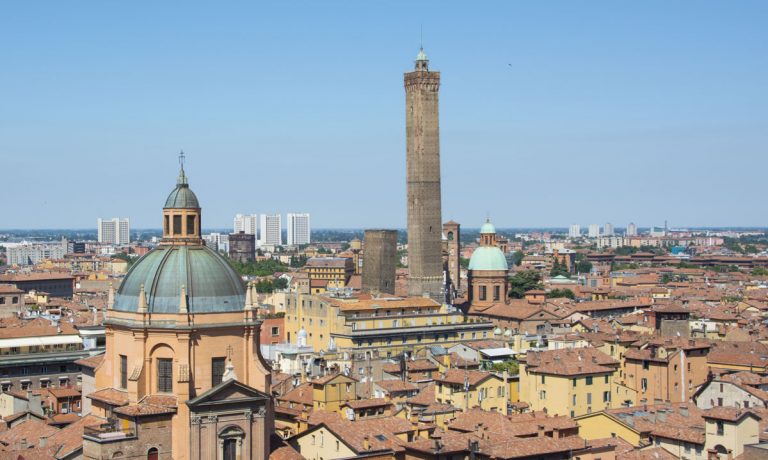14 Reasons To Visit Bayonne in France
Bayonne is a charming town located in the Nouvelle-Aquitaine region, in the Pyrénées-Atlantiques department. Situated at the meeting point of the Nive and Adour rivers near the Spanish border, Bayonne is part of the culturally rich Basque Country.
Bayonne with a population of approximately 50,000 is relatively small compared to major French cities. However, its strategic location and unique blend of Basque and French influences make it a significant and attractive destination. The town’s narrow streets, half-timbered houses, and lively festivals reflect its rich heritage, while its commitment to preserving traditions alongside modernity creates a unique and enchanting atmosphere.
Whether you’re a history buff, a food lover, or an outdoor enthusiast, Bayonne has something for everyone. In this article, we’ll explore the top reasons to visit Bayonne and what makes it a must-visit destination on your Basque Country itinerary.
Planning Your Trip to Bayonne?
Book a transfer from San Sebastian Airport (EAS) to the city center of Bayonne with Welcome Pickups.
Book your hotel online with Booking.com or Agoda.
Book your car with DiscoverCars.
Best Tours and Experiences in Bayonne:
Bayonne: Private Guided Walking Tour – Explore the medieval charm of Bayonne. Admire UNESCO-listed Bayonne Cathedral. Wander cobbled streets and riverside eateries. Duration: 1 hour 30 minutes.
Outdoor Escape Game Discover Bayonne Txokolatea – Explore the city of Bayonne in a with a digital outdoor escape game. Solve puzzles and riddles as you explore the city’s streets and landmarks.
Unusual and ecological ride on a Segway and electric bike in Bayonne – On this tour you will discover the authentic history of Bayonne on a Segway in an unusual way. Duration: 2 hours
Bayonne Food Tour: Journey Through Flavors (with food and drinks) – Discover the culinary secrets of Bayonne with a local guy on this small-group walking tour, limited to 12 people for an intimate experience. Duration: 3 hours and 30 minutes.
How to Get to Bayonne
Bayonne is easily accessible from both the French and Spanish parts of the Basque Country. From the French side, you can take a direct train from Paris, which takes approximately four hours. Alternatively, flights to Biarritz Airport, just a 15-minute drive from Bayonne, are available from several major French cities. From Spain, you can reach Bayonne by train or bus from cities like San Sebastián and Bilbao. The journey from San Sebastián takes about an hour and 30 minutes by train (with changes) therefore a bus is a more convenient option. If you are planning a road trip around the Basque Country, renting a car is a convenient option.
Check out our other articles on the popular Basque Country destinations:
2 Days In Biarritz: The Perfect Itinerary For Your Getaway
How To Spend 3 Days In San Sebastian: A Comprehensive Guide
What To Do In Bilbao For 3 Days: A Perfect Itinerary
A Glimpse into The History of Bayonne
Bayonne’s rich history dates back to Roman times, when it was known as “Lapurdum.” Its strategic location at the confluence of the Nive and Adour rivers made it an important port town throughout the centuries. During the Middle Ages, Bayonne flourished as a hub of trade and commerce. It was particularly noted for its role in the Basque whaling and cod-fishing industries. The town’s significance grew under English rule in the 12th century, greatly influencing its architecture and culture. Later, in the 17th century, Bayonne became renowned for its production of Bayonne ham and chocolate, industries that remain an integral part of its identity until this day.
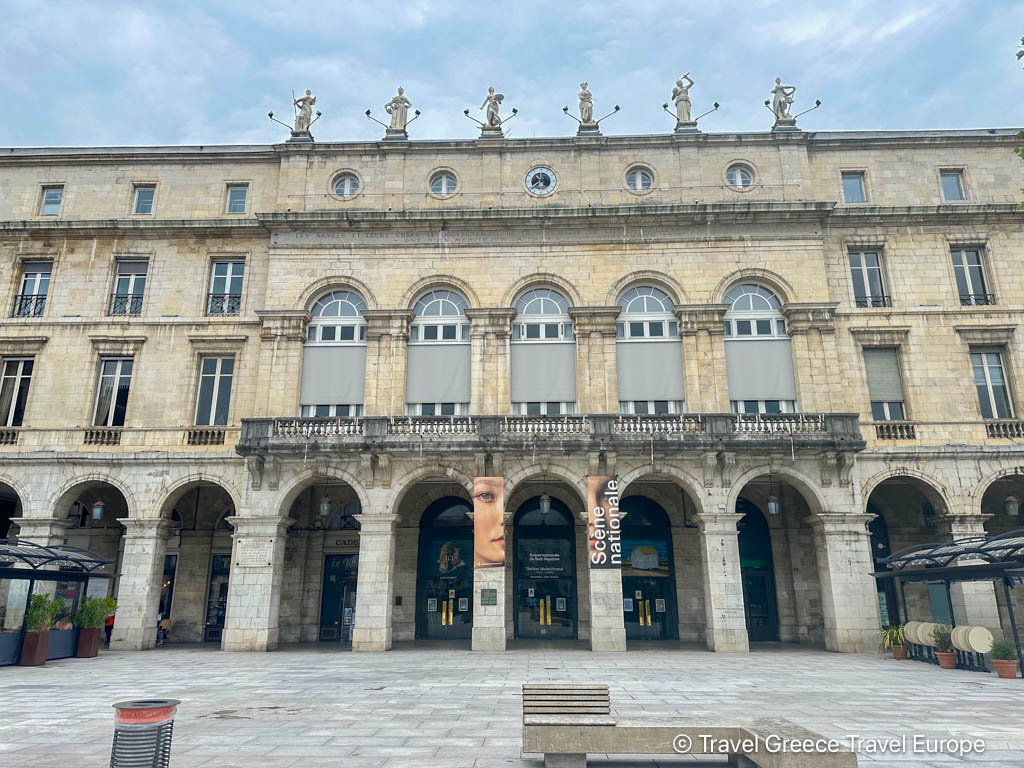
Walking through Bayonne’s ancient streets, you can admire landmarks like the Gothic Cathédrale Sainte-Marie (UNESCO World Heritage site) and the 12th-century Château Vieux, which are testaments to its storied past.
The Different Areas of Bayonne
Bayonne is divided into three distinct areas, each with its own unique character and attractions. Grand Bayonne, the historical heart of the city, features key landmarks such as the Cathédrale Sainte-Marie, Rue d’Espagne, and traditional markets, known for its charming narrow streets and half-timbered houses with colorful shutters. Petit Bayonne, across the Nive River, is the cultural hub, hosting the Basque Museum, art galleries, and a lively street art scene, with numerous bars, cafes, and restaurants that create a bohemian vibe. Saint-Esprit, on the north bank of the Adour River, offers a more residential feel and is rapidly becoming a trendy neighborhood with the Bayonne train station, the Vauban-built Citadel, and scenic river views, blending modern development with historical charm.
14 Reasons To Visit Bayonne
Although it is small in size, Bayonne offers a wealth of historical and cultural experience, lets explore them below.
#1. Visit The Cathédrale Sainte-Marie – A UNESCO World heritage site
The Cathédrale Sainte-Marie, also known as Bayonne Cathedral, is a stunning example of Gothic architecture and a UNESCO World Heritage site.
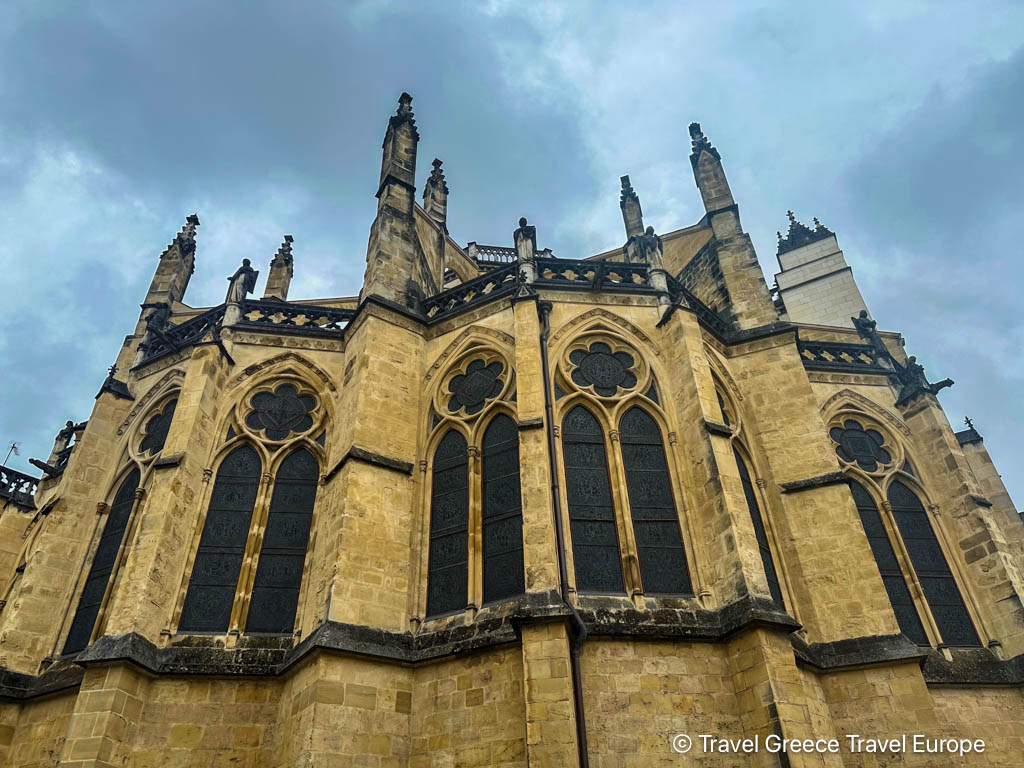
Its construction began in the 13th century and continued for several centuries, resulting in a majestic structure that dominates Bayonne’s skyline. The cathedral is renowned for its twin spires, soaring stained glass windows, and intricately carved stonework.
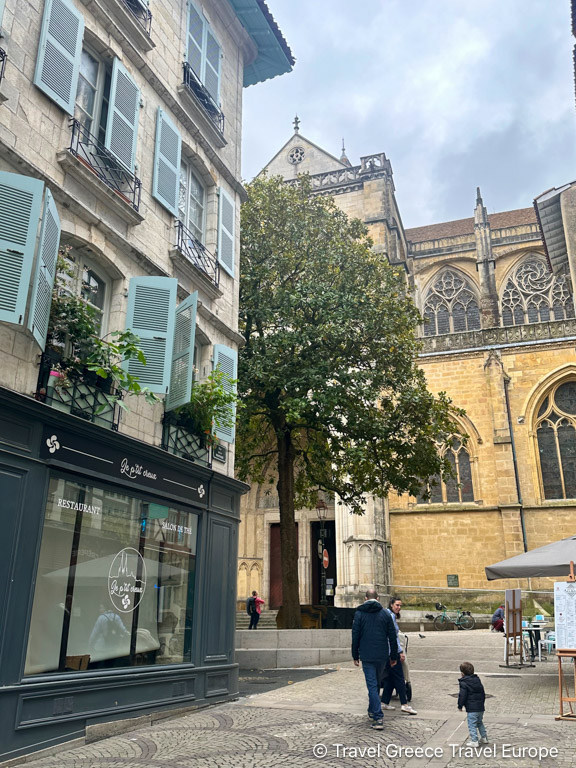
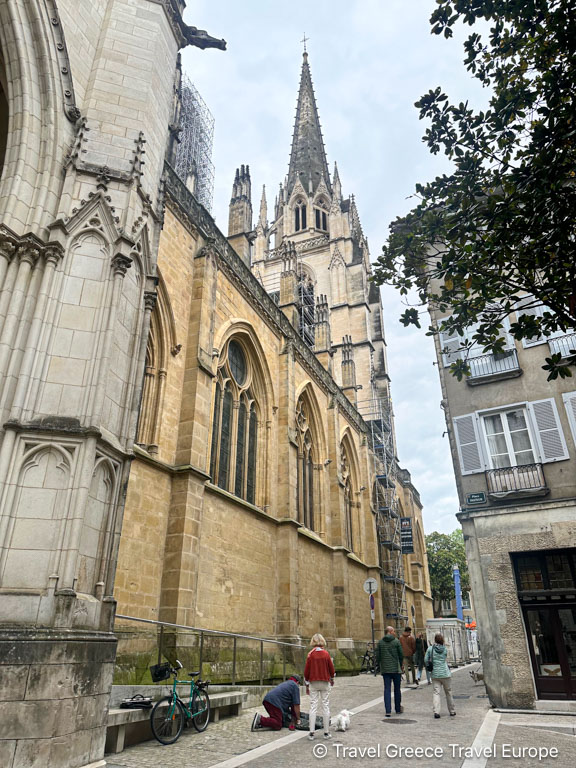
Its cloister, completed in the 14th century, is one of the largest in France and provides a serene space for contemplation. Historically, the cathedral has been a center of religious and cultural life in Bayonne, hosting significant events and serving as a pilgrimage site on the Way of St. James. Its importance extends beyond its religious function; the Cathédrale Sainte-Marie is a symbol of Bayonne’s rich heritage and architectural splendor, drawing visitors from around the world to admire its beauty and historical significance


#2. Walk The Rue d’Espagne
The main street leading to the Cathédrale Sainte-Marie is Rue d’Espagne, it starts from the main square right next to the City Hall Building.
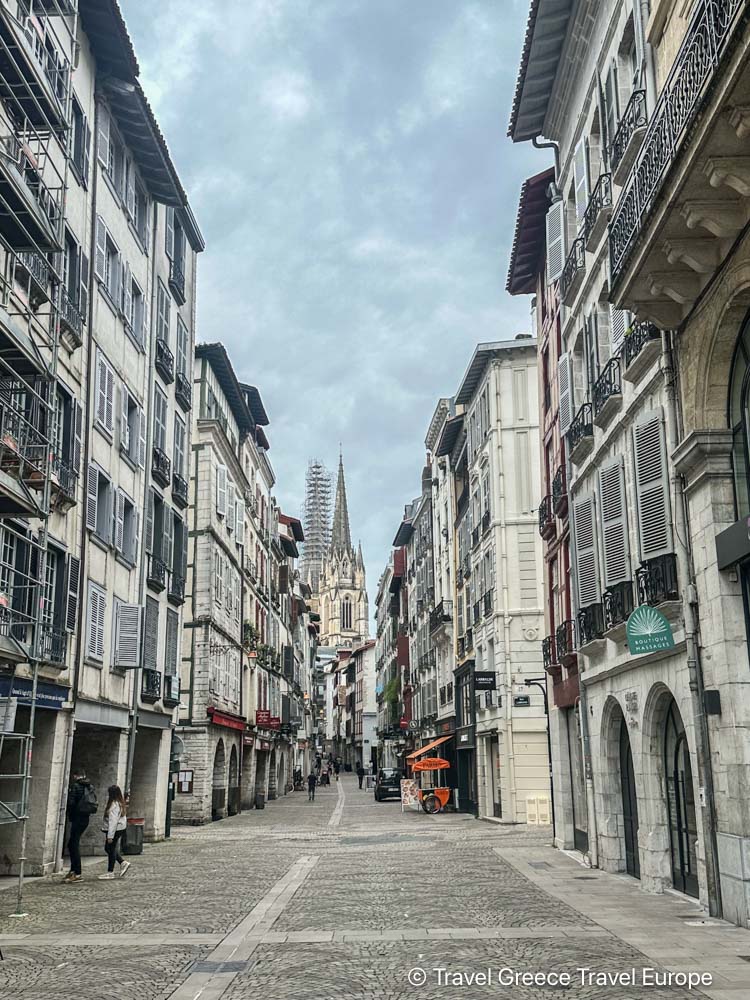
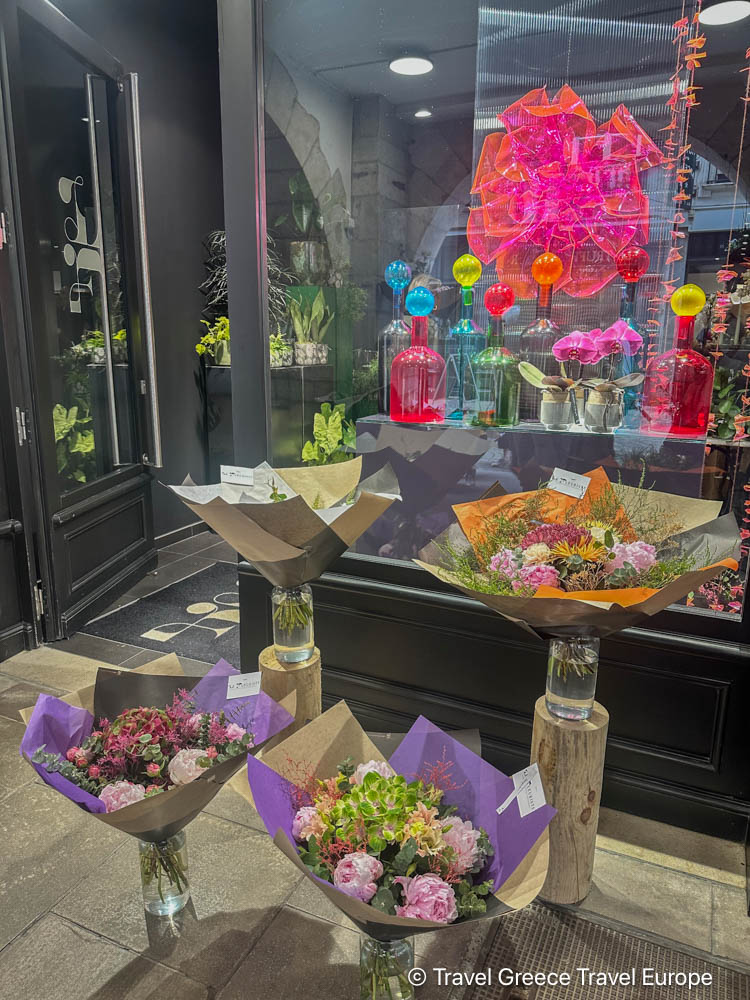
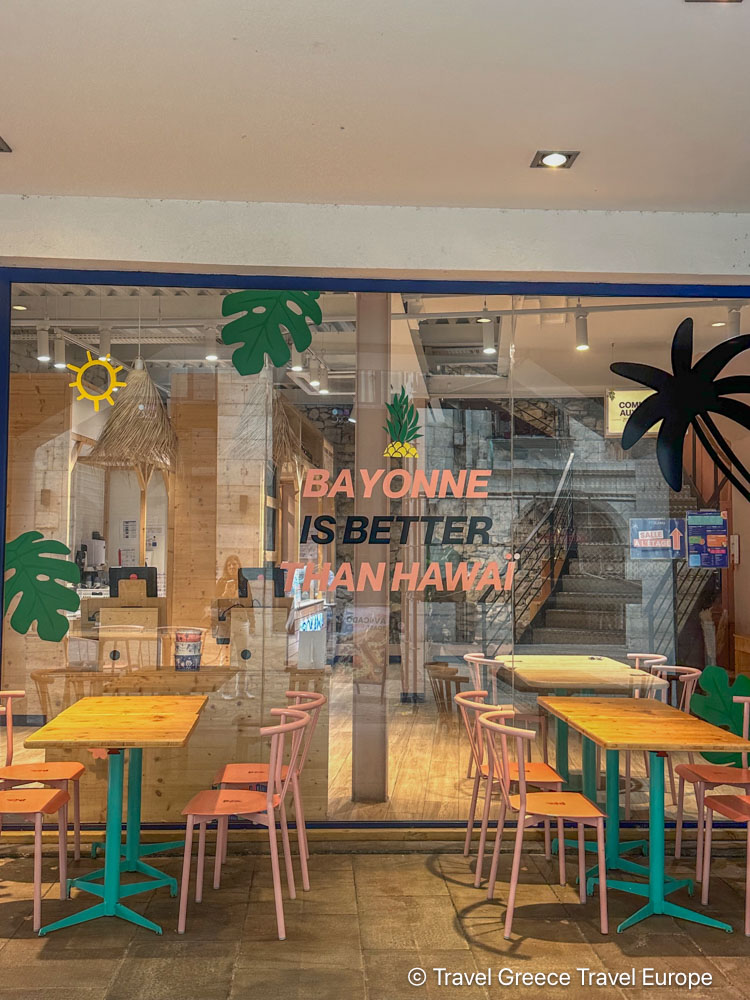
This charming, narrow street is lined with picturesque half-timbered houses, boutiques, and cafes, offering a delightful approach to the cathedral. As you walk along Rue d’Espagne, you can soak in the vibrant atmosphere and historic charm of Bayonne, making the journey to the cathedral as enjoyable as the destination itself.
#3. Explore Château Vieux
Château Vieux, or the Old Castle dates back to the 12th century. It was originally built by the Viscounts of Labourd, and served as a crucial defensive stronghold due to its strategic location near the confluence of the Nive and Adour rivers.
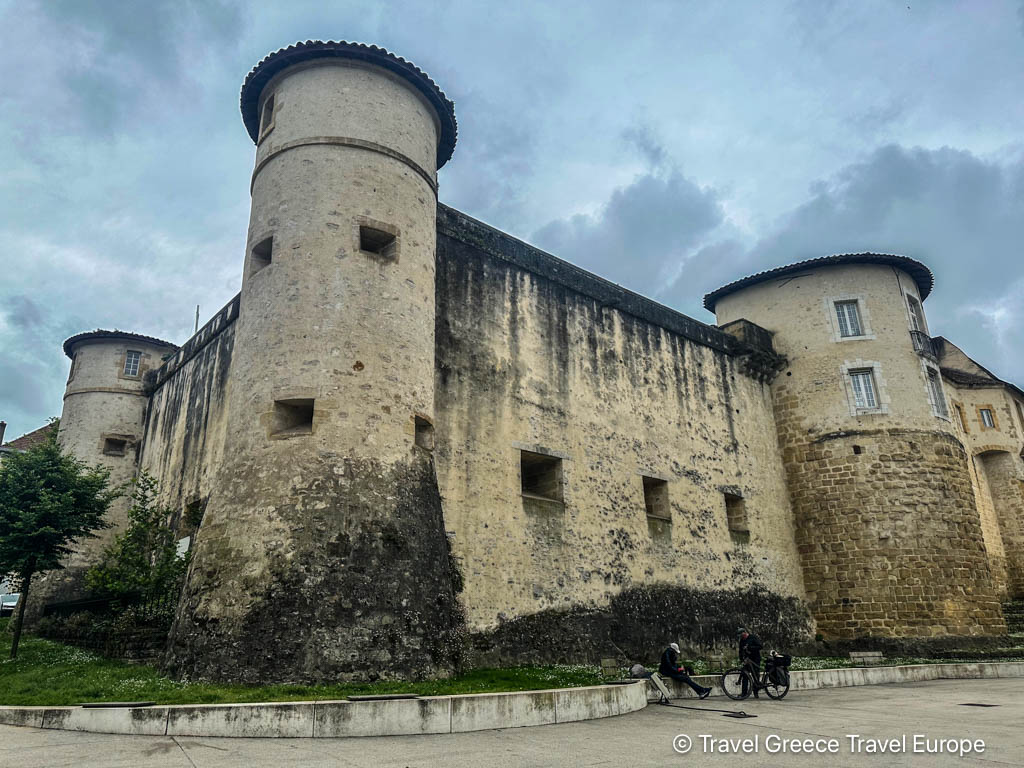
Over the centuries, Château Vieux has witnessed numerous conflicts and changes in control, from the English occupation during the Hundred Years’ War to its integration into the French kingdom. From here visitors can enjoy panoramic views of the surrounding town and landscape.
#4. Walk Along The Ramparts of Bayonne
The Ramparts of Bayonne are a remarkable set of defensive walls that encircle the town, bearing witness to its strategic military importance throughout history.
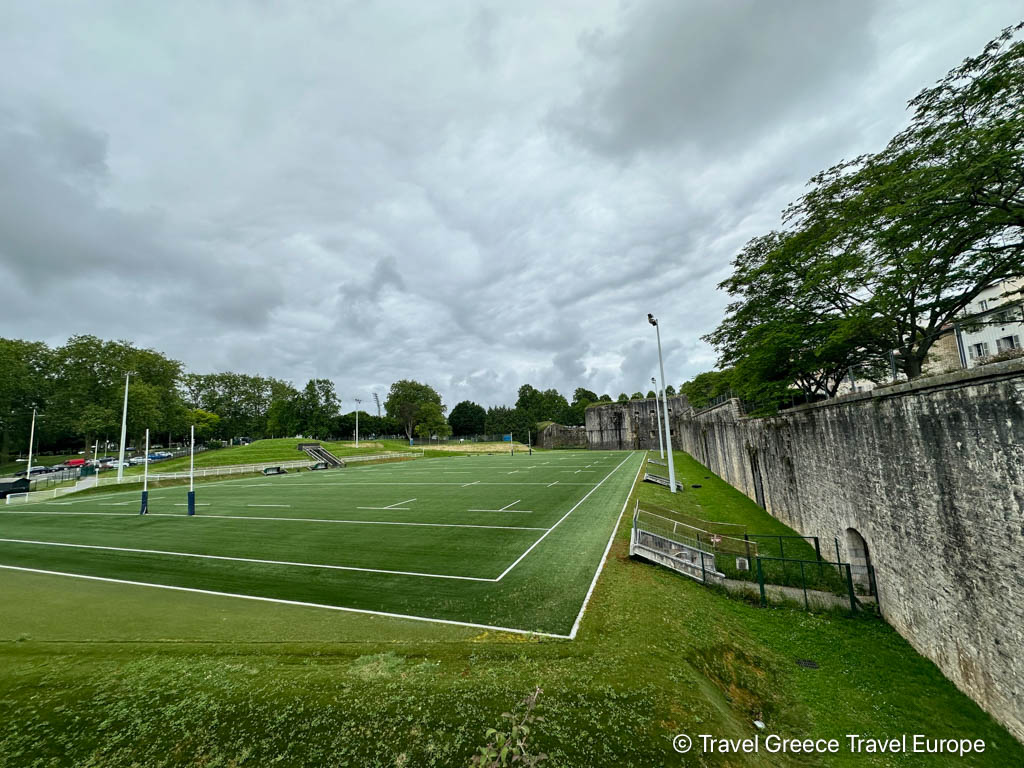
Dating back to Roman times, these fortifications were significantly enhanced during the medieval period and later by famed military engineer Vauban in the 17th century. The ramparts, constructed with robust stone and featuring bastions and gates, provided protection against invasions and conflicts, including the Franco-Spanish wars.
#5. Admire Bayonne’s Houses with Colorful Shutters
Walking through the narrow streets of Bayonne you will come across many houses with colorful shutters. In fact they are characteristic of the town’s architectural charm and Basque heritage.
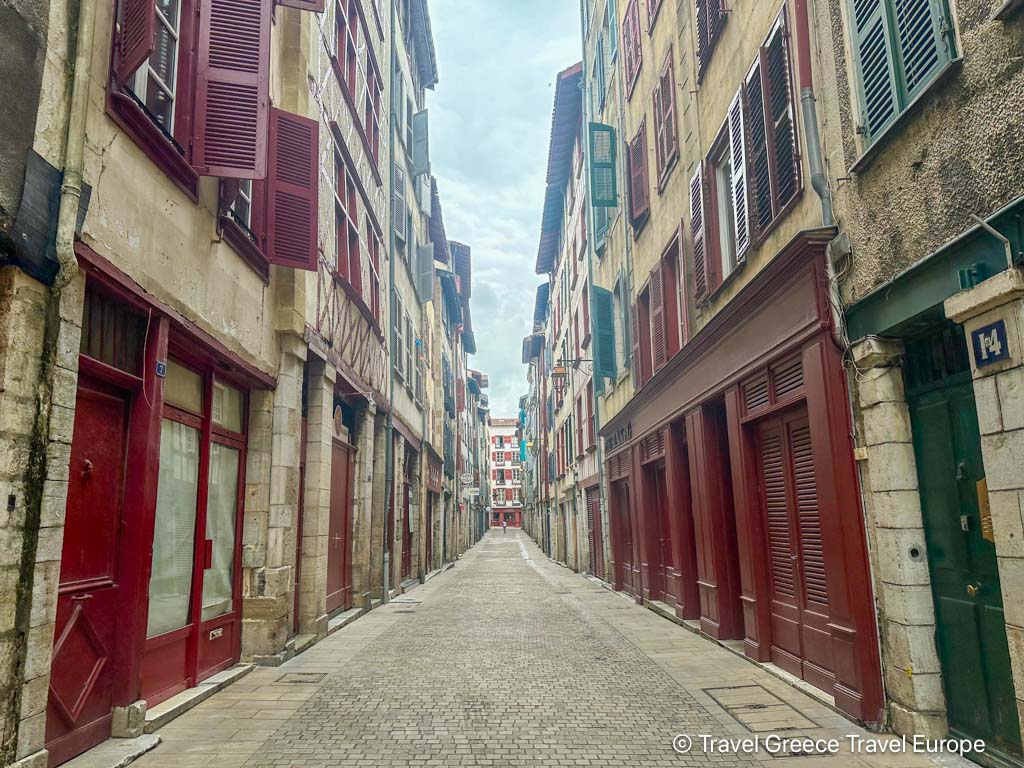
These traditional half-timbered houses, often painted in vibrant shades of red, green, and blue, reflect a long-standing regional custom. The use of color on shutters and wooden beams dates back to the 17th century, when local laws encouraged residents to paint their homes in specific colors to denote different family lineages and trades.
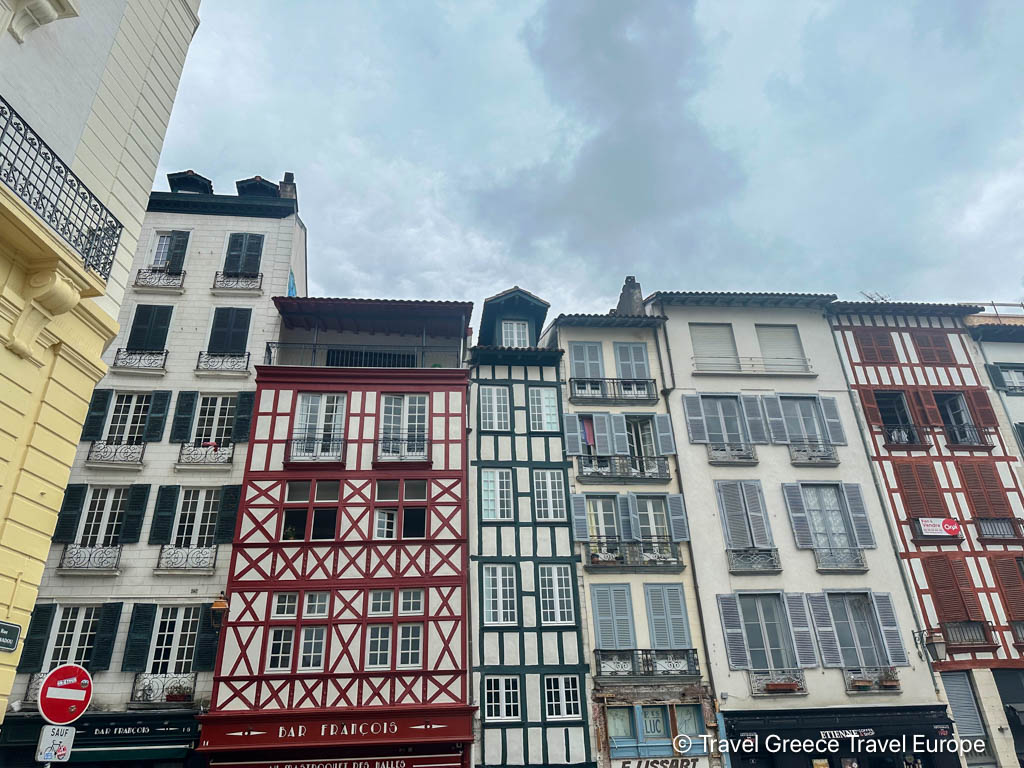
The colors themselves have cultural significance: red typically symbolizes the oxblood used historically as a preservative, green represents the lush Basque countryside, and blue is thought to have protective qualities. These colors not only add to the aesthetic appeal of Bayonne but also serve practical purposes, such as protecting the wooden elements from weathering and termites.
#6. Discover The Vibrant Street Art in Bayonne
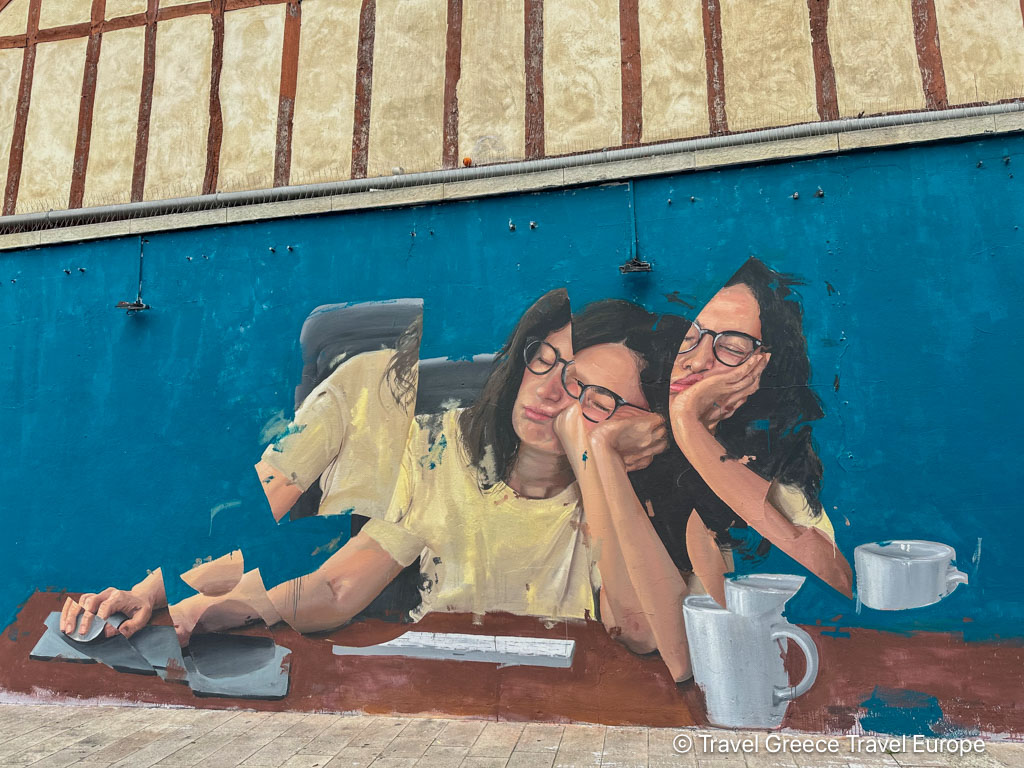
Bayonne boasts a vibrant street art scene that adds a contemporary flair to its historical streets. The town has embraced urban art, transforming its walls into canvases for local and international artists. As you wander through Bayonne, particularly in the Petit Bayonne district, you’ll encounter an array of striking murals, graffiti, and installations that reflect both Basque culture and modern artistic expressions.

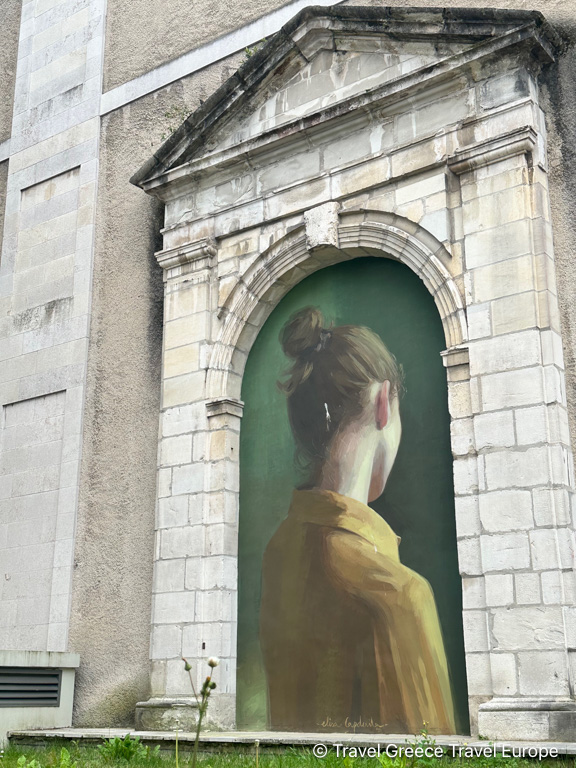
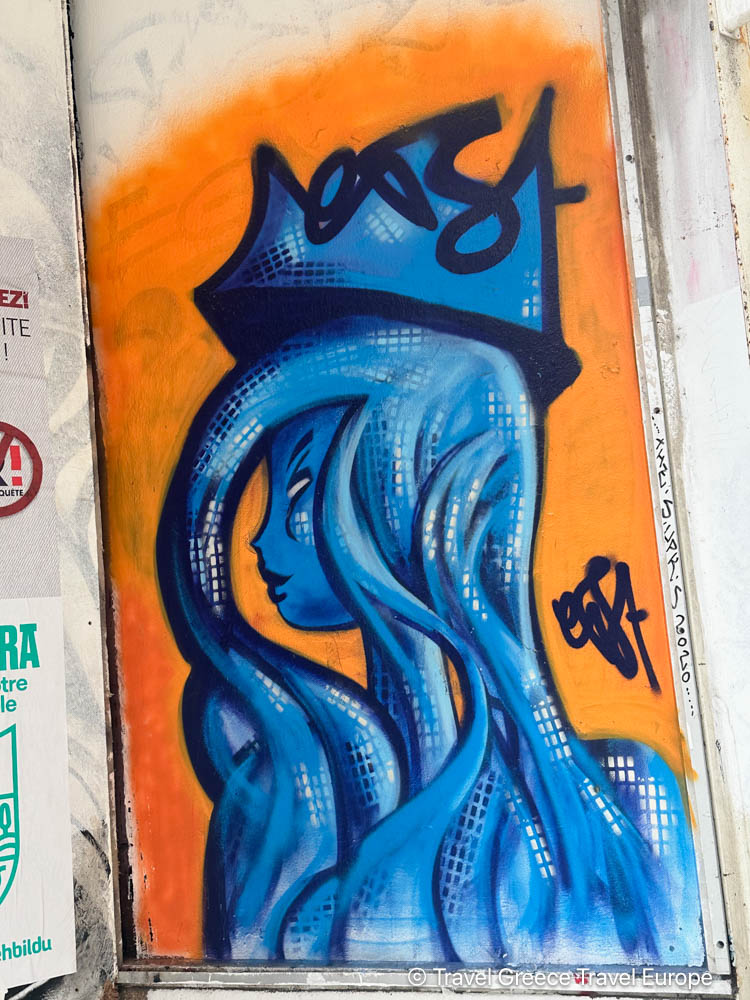
One notable event is the “Points de Vue” street art festival, held annually, which invites artists from around the world to create new works on the city’s walls. This festival has contributed significantly to the growing collection of street art, making Bayonne a dynamic gallery of outdoor art. You can also book a guided street art tour though the official website.
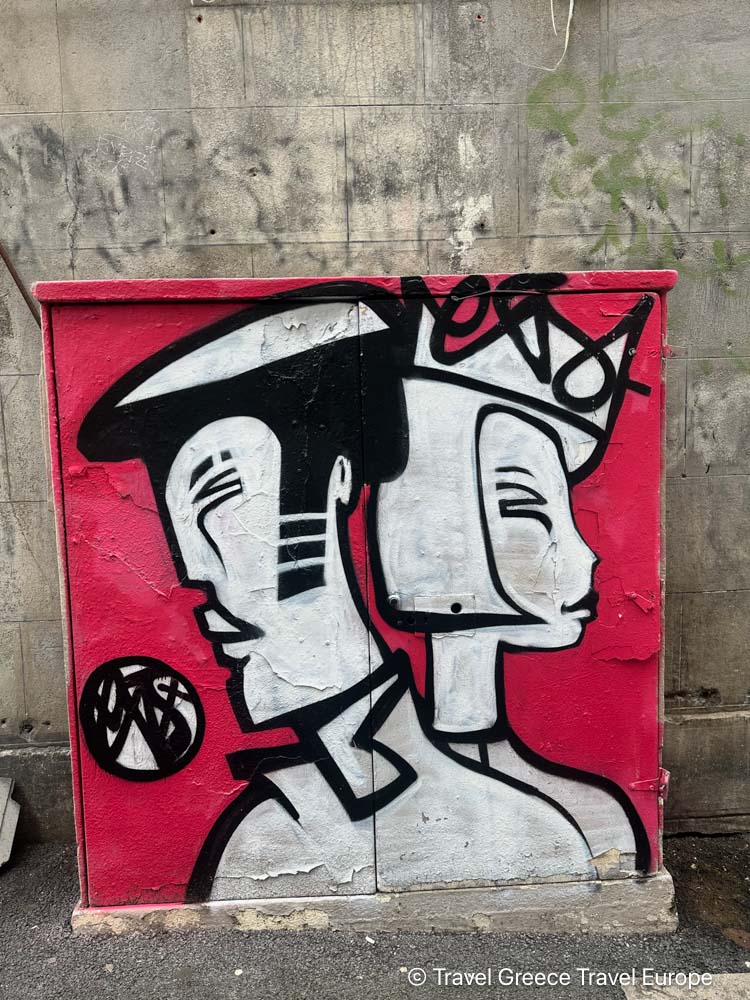
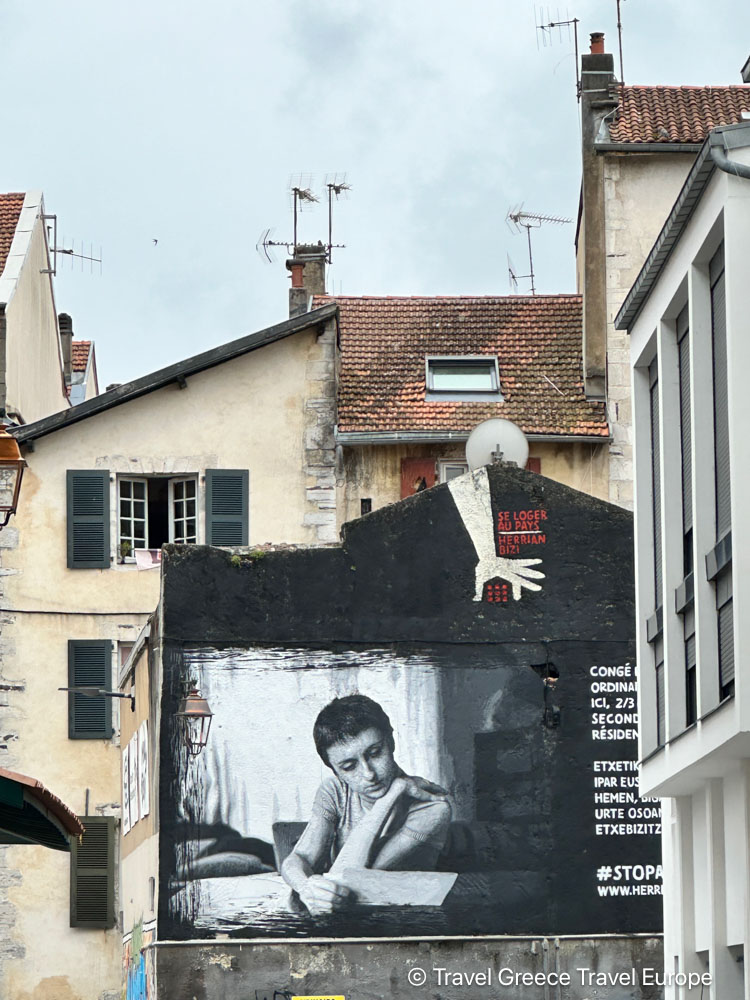
#7. Wander Through The Petite Bayonne District
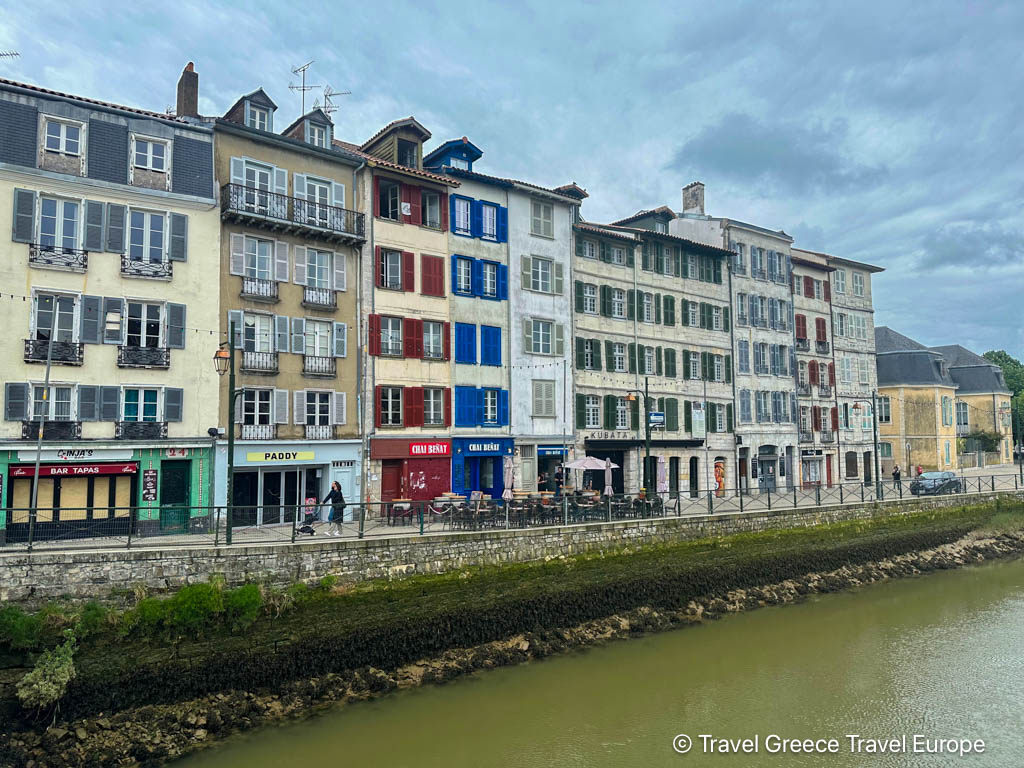
Petit Bayonne, located across the Nive River, is the cultural hub of the town. It hosts the Basque Museum, various art galleries, and is famous for its lively street art scene. This area has a youthful and bohemian vibe, with numerous bars, cafes, and restaurants that come alive, especially in the evenings.
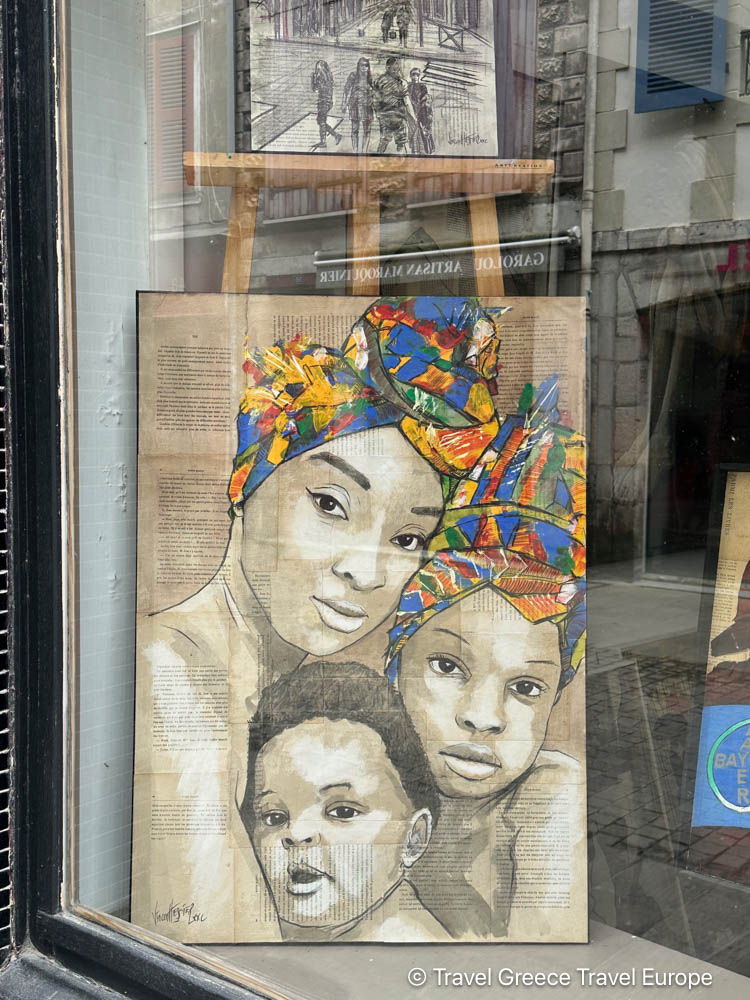
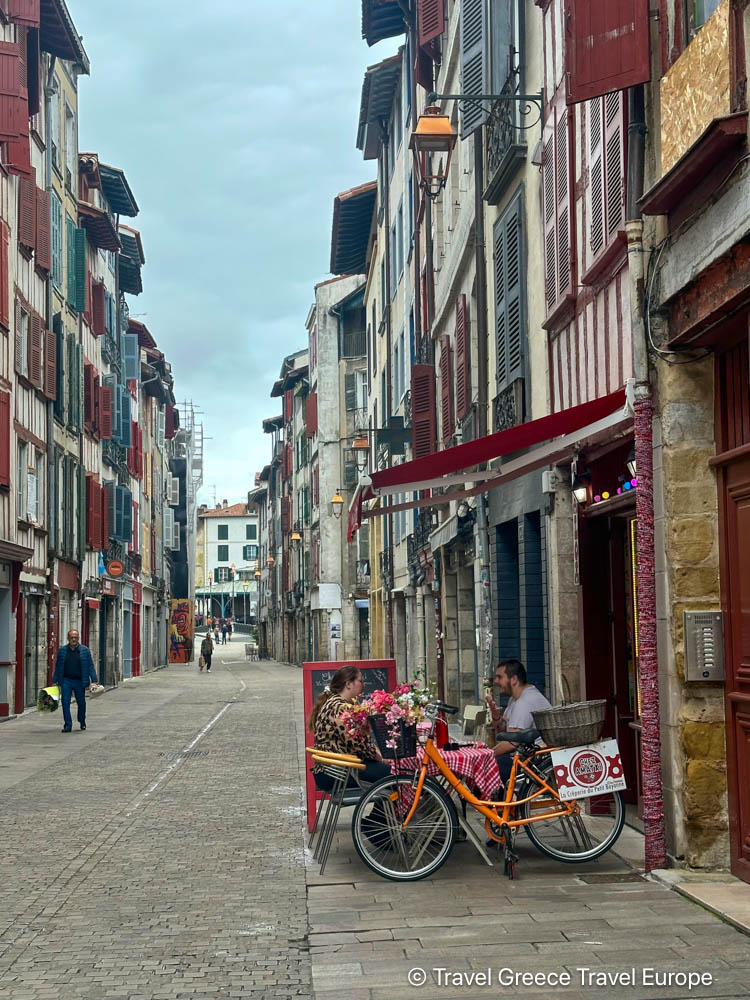
#8. Visit Les Halles: A Fantastic Reason To Visit Bayonne
The Central Market of Bayonne, known as Les Halles, is a bustling hub of activity and a must-visit destination for anyone looking to experience the authentic flavors and vibrant culture of the region.
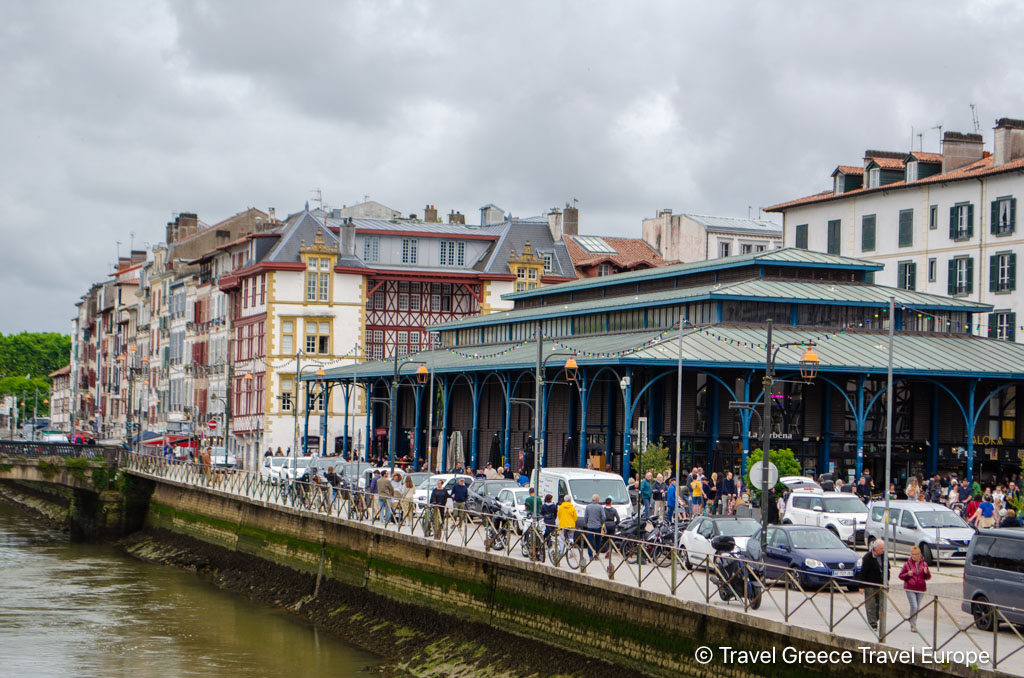
Located in the heart of Grand Bayonne, this market is housed in a beautiful 19th-century building that exudes historical charm. Les Halles is renowned for its diverse selection of fresh produce, meats, seafood, and local specialties, including the famous Bayonne ham and artisan chocolates.
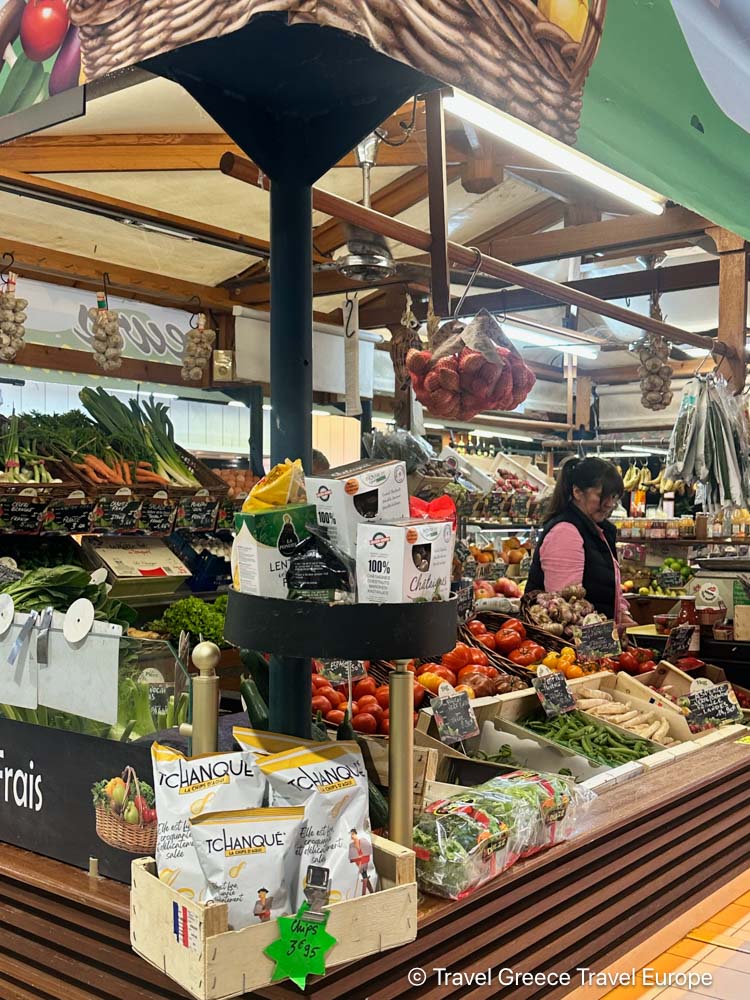
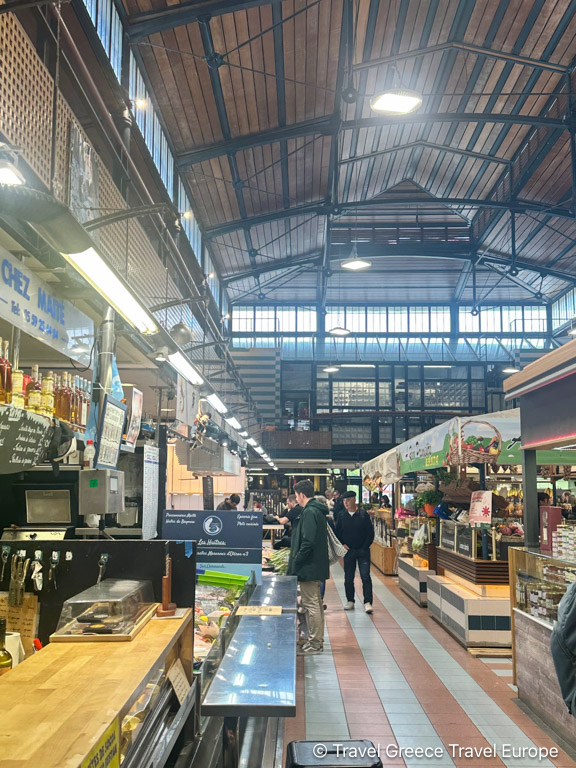
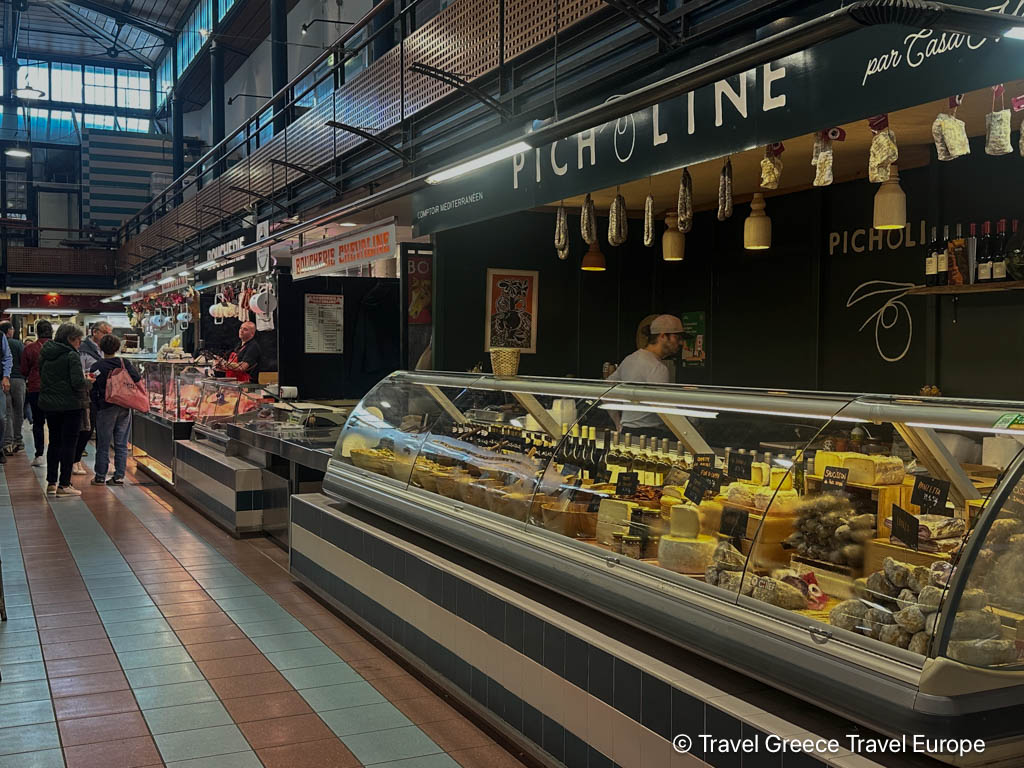
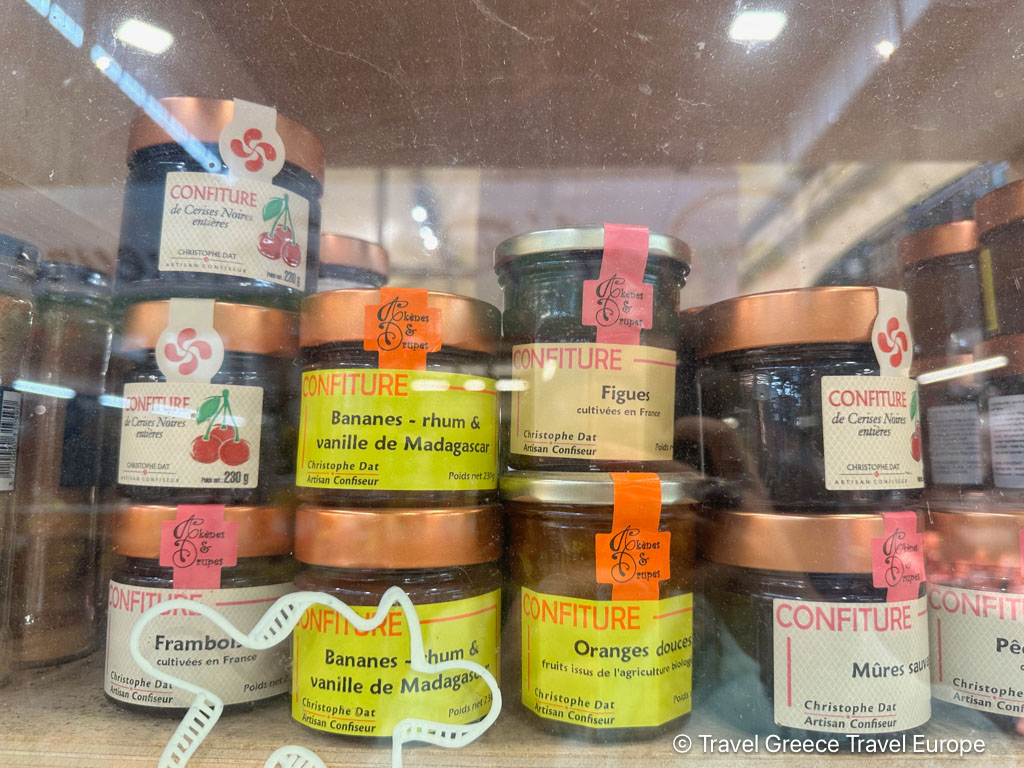
Here you will find a selection of vendors who proudly display an array of Basque cheeses, olives, and other delicacies, and get a true taste of the Basque Country. Beyond its culinary offerings, the market is a great place for social gathering. Enjoy a coffee, a glass of wine or a meal in one of its outdoor establishments, and soak in the lively atmosphere.
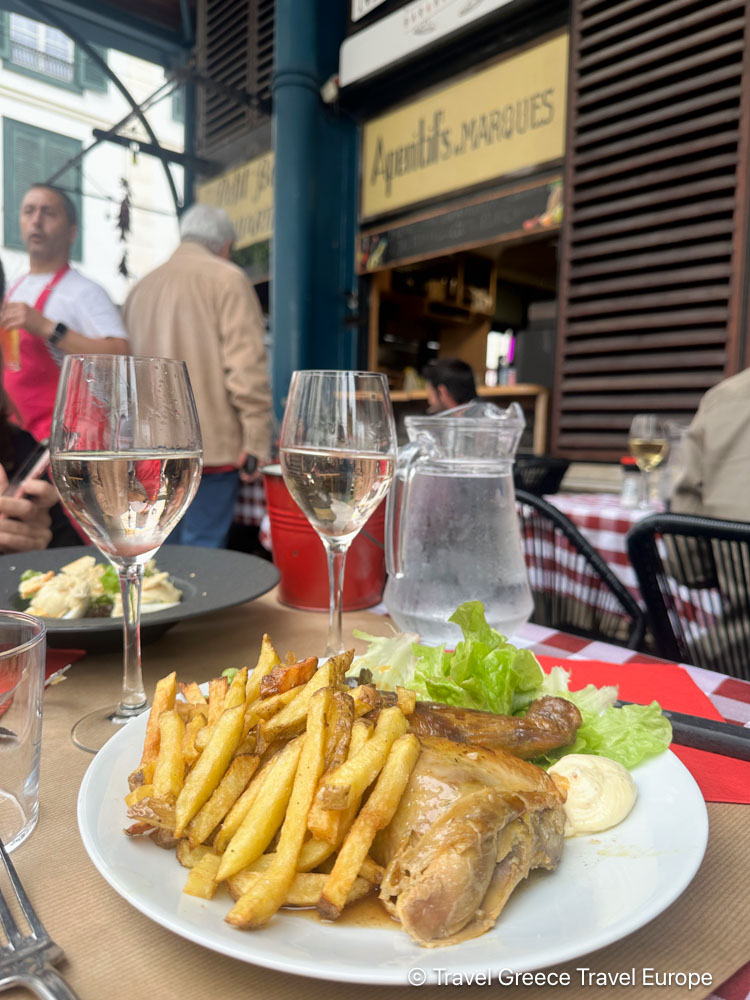
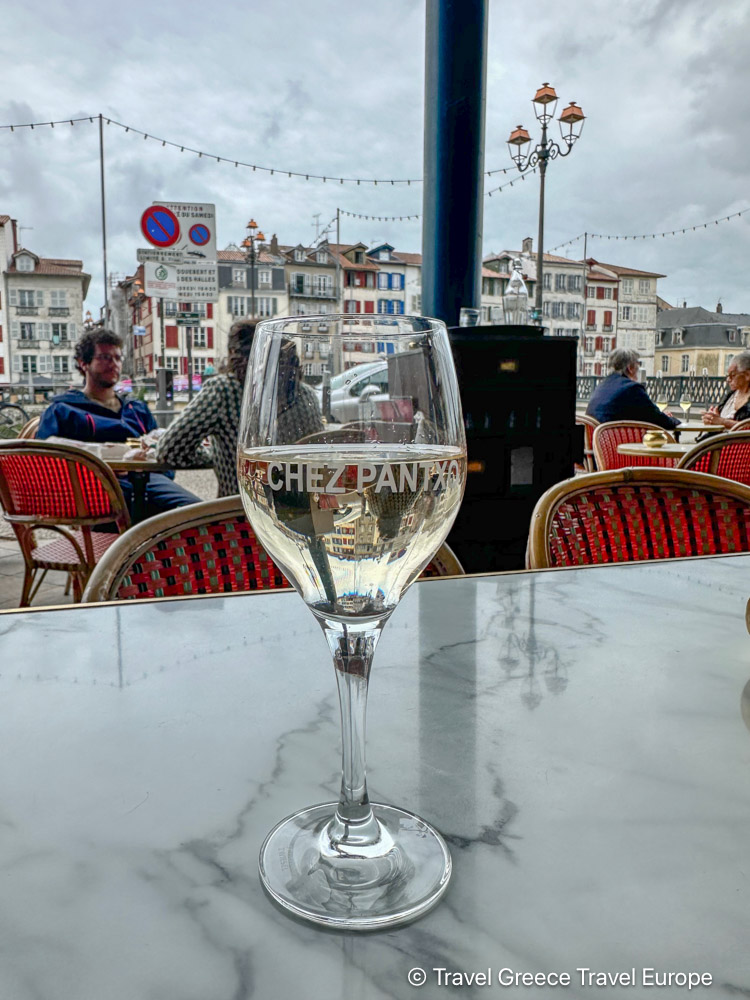
It was Sunday when we visited the Les Halles – so we sat down for lunch to savor the “Poulet rôti.” This classic French dish involves roasting a whole chicken, typically seasoned with herbs like thyme, rosemary, and garlic, and often basted with butter or olive oil to achieve a crispy, golden skin. It’s commonly served with a variety of sides such as roasted potatoes, vegetables, and a light salad. Poulet rôti is a staple in French cuisine, beloved for its simplicity, rich flavor, and comforting qualities.
#9. La Porte sur la Nive
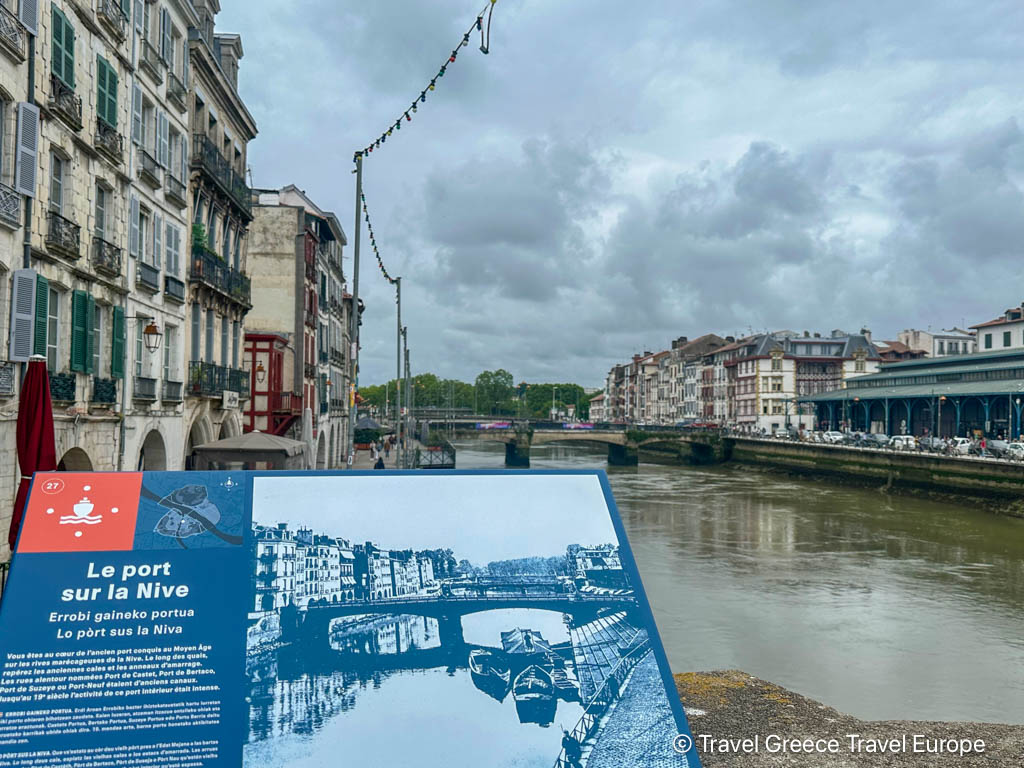
La Porte sur la Nive, or the Gate on the Nive, is a historic gateway in Bayonne that represents the town’s rich maritime and trading heritage. It is located right next to the central market – Les Halls. Dating back to the medieval period, this gate was a critical point of entry and exit for goods and travelers along the Nive River, which played a vital role in Bayonne’s economic development. The gateway facilitated the transport of regional products, such as the famous Bayonne ham and chocolate, and helped establish Bayonne as a prominent trading hub.
#10. Delve Into The History of Bayonne at the Basque Museum
The Basque Museum, is located in the Petit Bayonne district. This cultural treasure offers a comprehensive look into the rich history, traditions, and identity of the Basque people. Housed in a beautifully preserved 16th-century mansion, the museum’s extensive collection includes artifacts, art, and exhibits that span from prehistoric times to the present day.
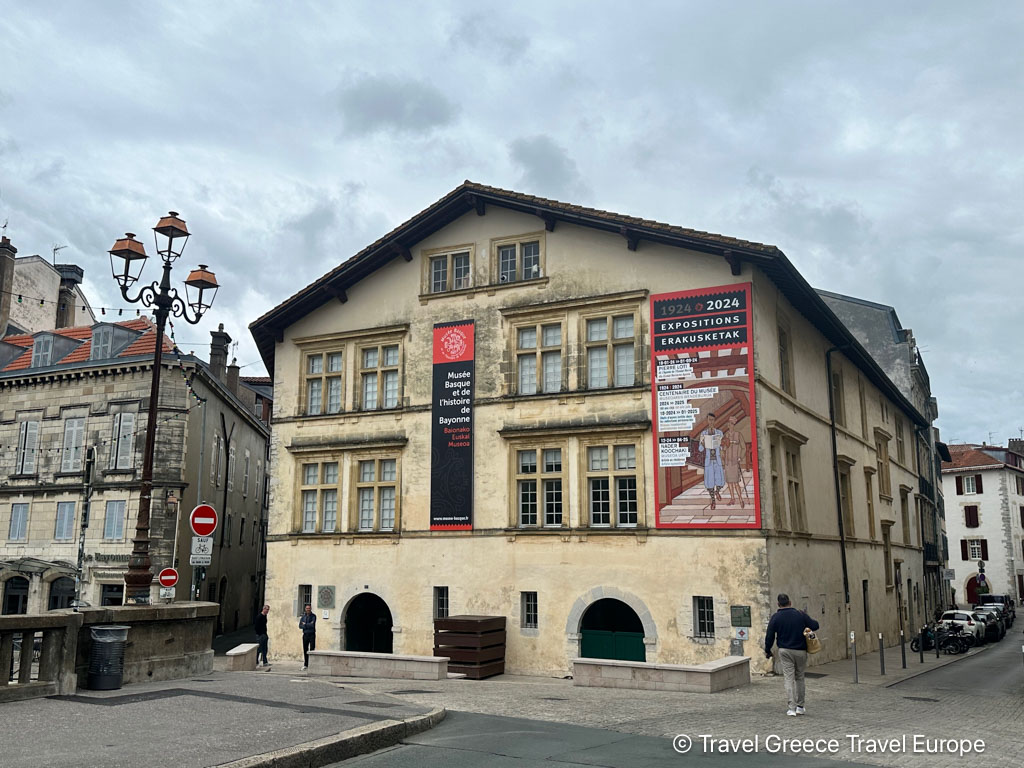
Here you can explore displays on traditional Basque crafts, such as weaving and woodworking, as well as maritime history, agriculture, and the unique Basque language, Euskara. The museum also showcases traditional Basque costumes, musical instruments, and festive customs, providing a deep understanding of the region’s vibrant cultural heritage. Interactive exhibits and detailed explanations make the museum accessible and engaging for all ages.
#11. Église Saint-André: A Gothic Gem
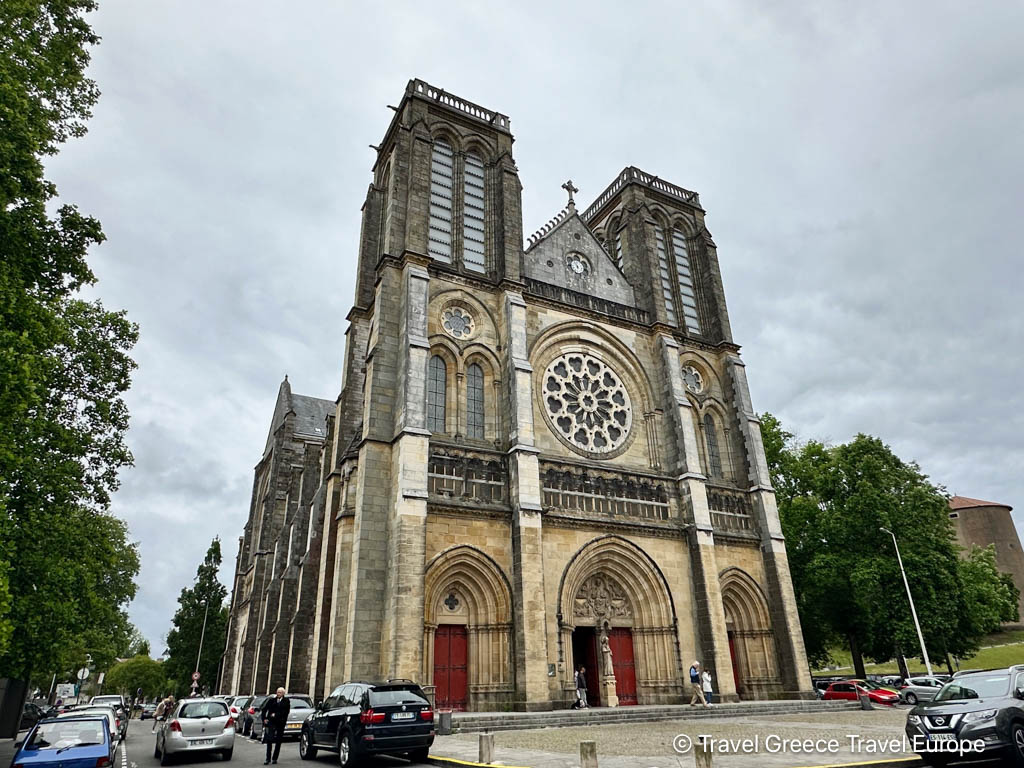
Église Saint-André or the St. Andrew’s Church, located in the heart of Bayonne is a striking example of Gothic architecture, built in the late 19th century. Its twin spires dominate the skyline, while the interior features high vaulted ceilings, vibrant stained glass windows, and ornate woodwork. The church is renowned for its impressive pipe organ and serves as a spiritual and community center for Bayonne’s residents.
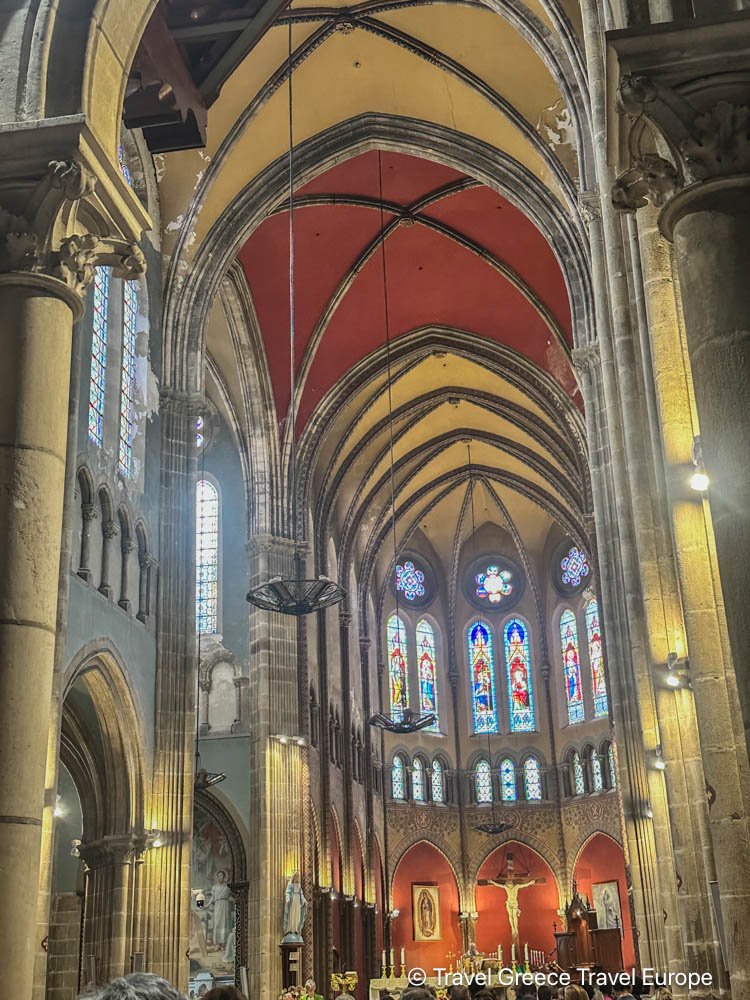
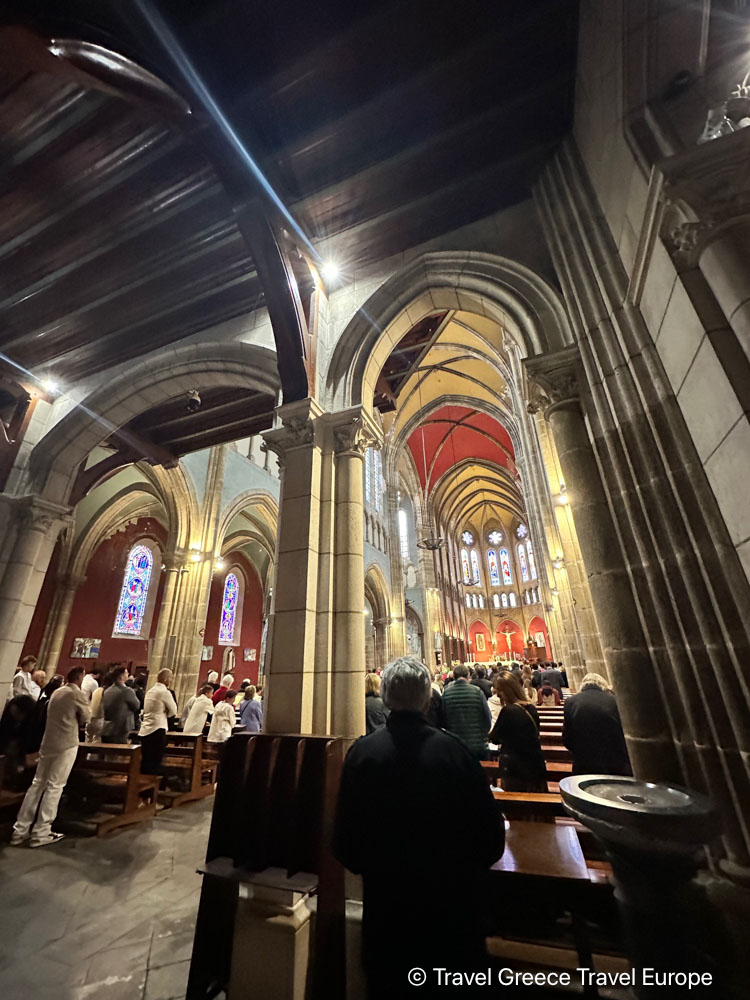
#12. Go Shopping in Bayonne: A Delightful Experience
Shopping in Bayonne offers a delightful mix of traditional and modern retail experiences. The town’s historic streets are lined with charming boutiques, artisanal shops, and vibrant markets. A must-visit establishment is Galeries Lafayette, located at the foot of Château Vieux between Rue Thiers and Place Jacques Porte. This remarkable Art Deco building, designed by Louis and Benjamin Gomez and built by local craftsmen between 1924 and 1930, houses top brands of ready-to-wear clothing, homeware, jewelry, and fashion accessories for men, women, and children.
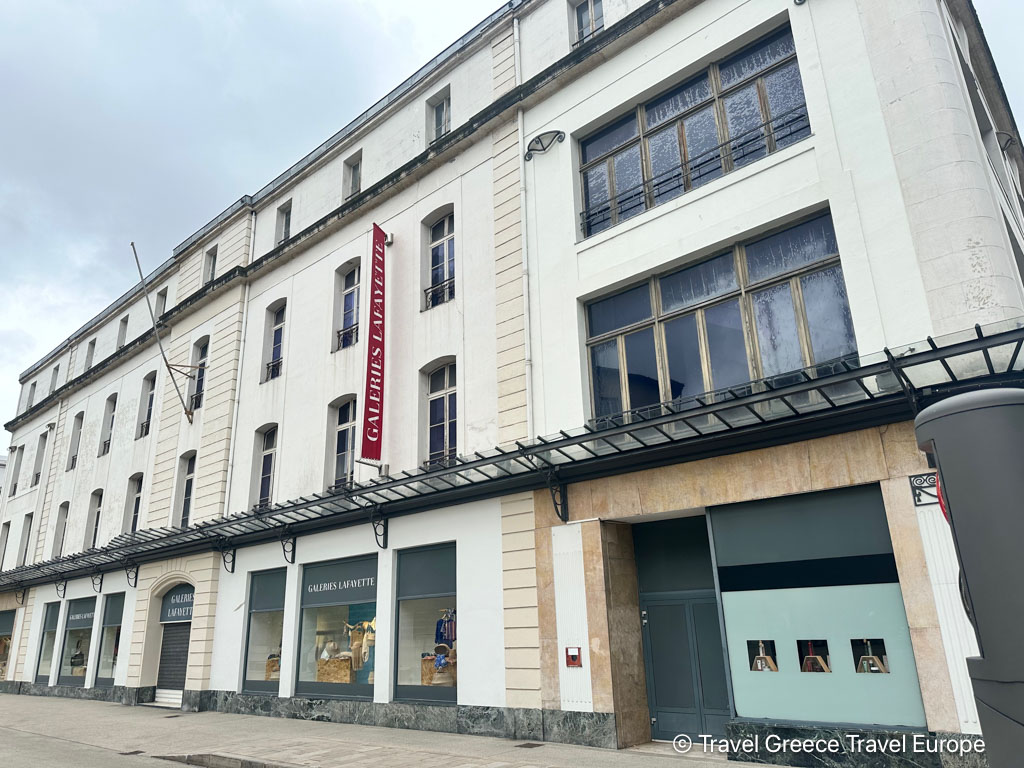
Another major shopping destination is Bayonne’s Halles centrales, the city’s commercial hub for over 150 years. This bustling market is perfect for gourmet shopping, with twenty or so stalls offering cheese, fresh produce, deli items, seafood, and wines. Surrounding the market, the alleyways are filled with stores selling regional products, providing plenty of gourmet ideas to bring back memories of your visit to the Basque Country.
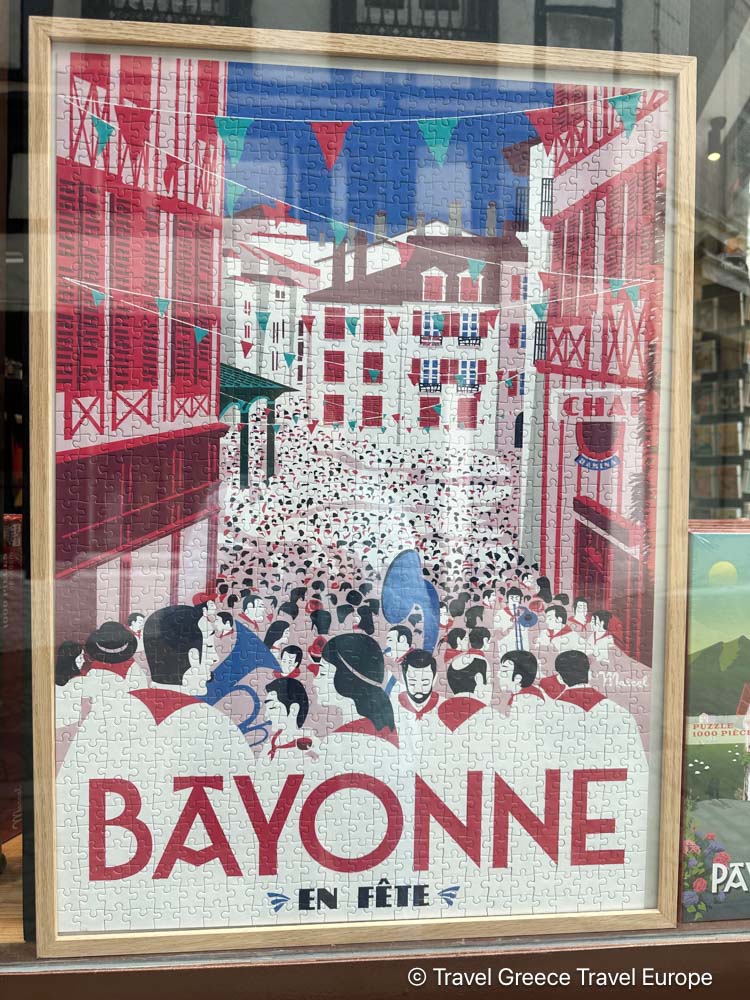
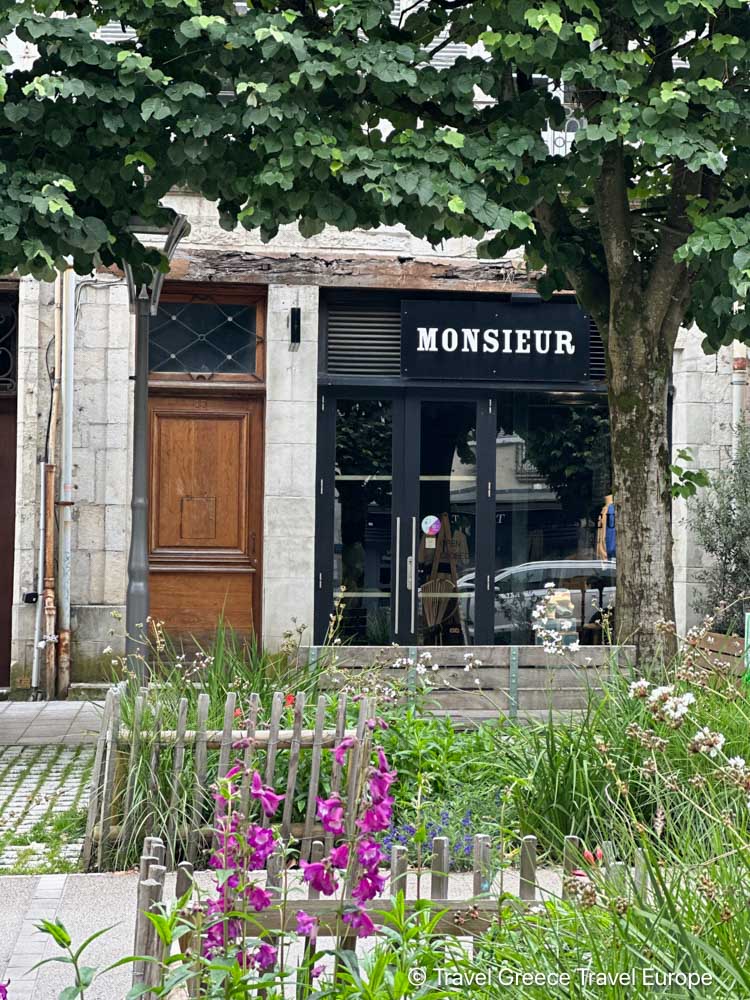
For fashion enthusiasts, Rue d’Espagne is home to numerous ready-to-wear stores and is one of Bayonne’s busiest shopping streets. Meanwhile, Rue Orbe, extending into Rue de la Salie, offers a mix of local brands and national franchises. Impressively, over 80% of Bayonne’s stores are run by independent retailers, adding to the unique charm of shopping here. The medieval streets around the cathedral are particularly noteworthy, hosting independent designer boutiques and arts and crafts workshops.
#13. On Sunday Dance With The Locals – Mutxikoak
Every Sunday, the area around Bayonne’s Central Market, Les Halles, comes alive with the vibrant sounds and sights of traditional Basque dancing.
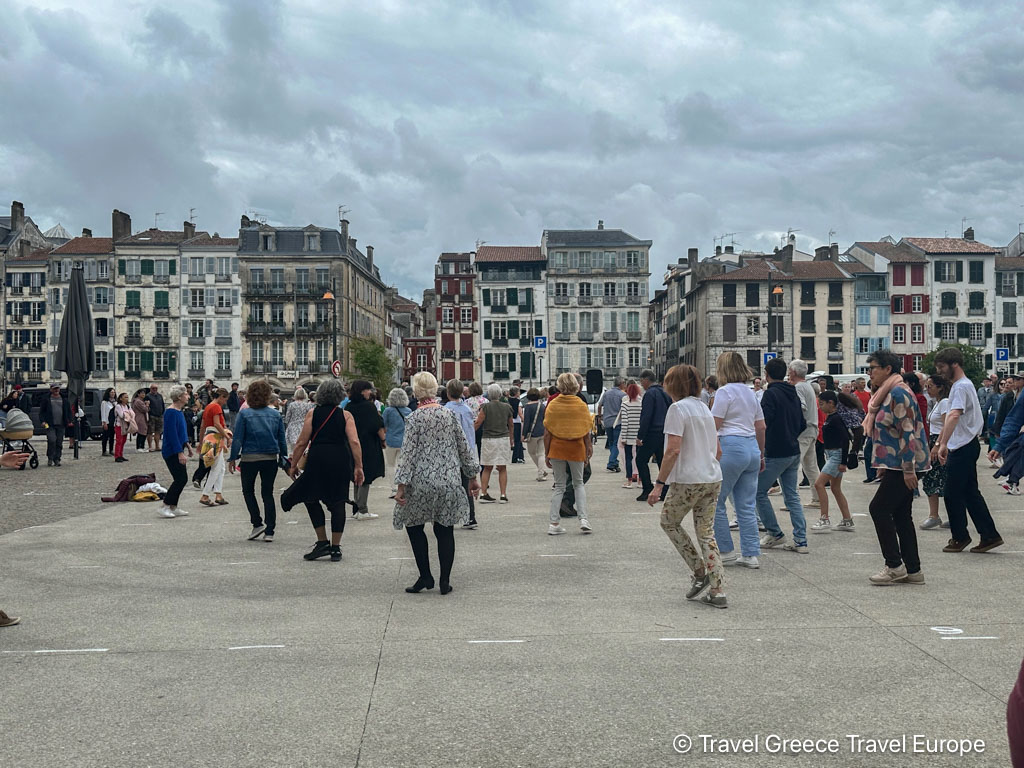
This lively event, known as “Mutxikoak,” features locals dressed in traditional Basque attire performing communal dances to the rhythm of folk music. The dances, characterized by their lively steps and joyful movements, are a cherished part of Basque culture and offer a glimpse into the region’s rich heritage. Visitors are welcome to join in or simply watch and enjoy the festive atmosphere.
#14. Fêtes de Bayonne: A Summer Spectacle
Plan your visit to Bayonne during the famous Fêtes de Bayonne, an exuberant summer festival that transforms the entire town into a sea of red and white. Held annually at the end of July, this five-day celebration is one of the largest and most popular festivals in France, drawing hundreds of thousands of visitors. The streets of Bayonne come alive with vibrant parades, traditional Basque music, and lively dances. People of all ages participate in the festivities, donning red and white attire to honor the festival’s tradition. Highlights of the event include the ceremonial release of the festival mascot, King Léon, the running of the bulls, and spectacular fireworks displays. The atmosphere is electric, with countless activities such as street performances, gourmet food stalls, and sporting events.
Where to Stay in Bayonne: Top-Ranked Hotels
Bayonne offers a range of accommodation options that cater to various preferences and budgets, ensuring a comfortable stay for every visitor.
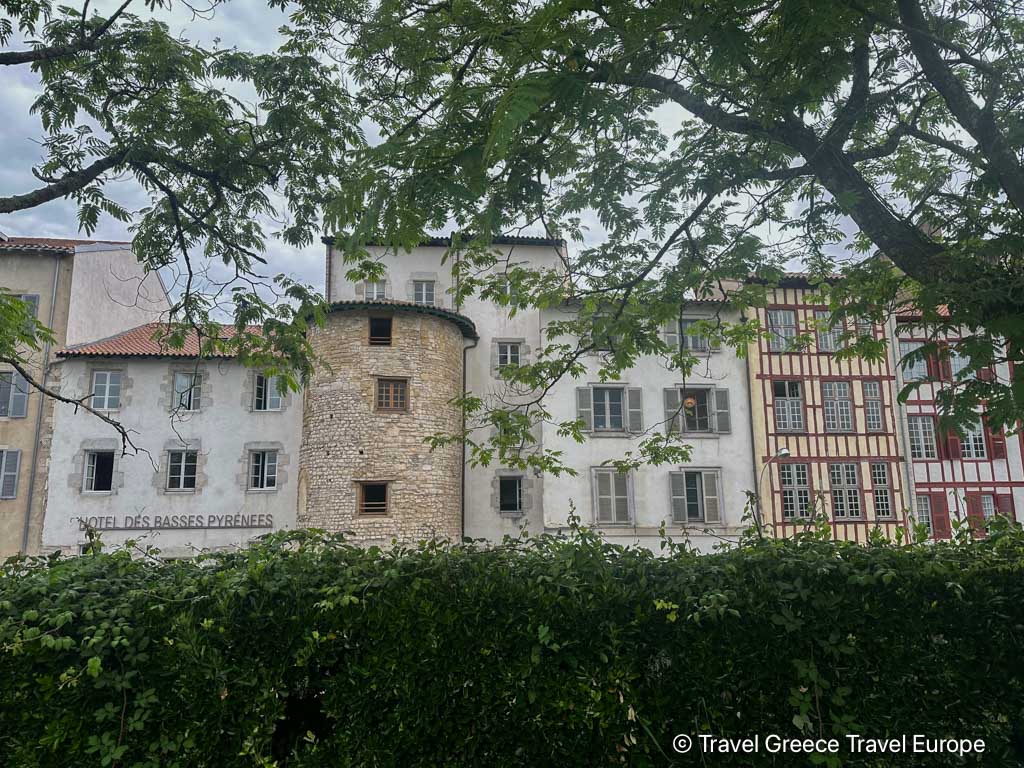
For those seeking luxury, Hôtel des Basses Pyrénées is a top choice, renowned for its elegant rooms and excellent service in a historic building. Another highly recommended option is the Hotel Villa KOEGUI Bayonne, which combines contemporary design with traditional Basque elements, offering a unique and stylish experience. For a more boutique feel, Hôtel Côte Basque is a charming hotel with modern amenities and a cozy atmosphere, conveniently located near the train station. If you prefer a central location, Ibis Styles Bayonne Centre Gare offers comfortable and affordable accommodations with a beautiful view of the Adour River. Each of these hotels provides a welcoming base from which to explore the rich culture, history, and culinary delights of Bayonne.
Conclusion
We hope that in this article we have given you enough reasons to visit Bayonne. From the historical charm of Grand Bayonne to the artistic flair of Petit Bayonne and the evolving Saint-Esprit district, the town offers diverse attractions. Highlights include the stunning Cathédrale Sainte-Marie, bustling Les Halles market, and the lively Fêtes de Bayonne festival. Whether you’re a history buff, foodie, or culture enthusiast, Bayonne most certainly promises a memorable experience.


